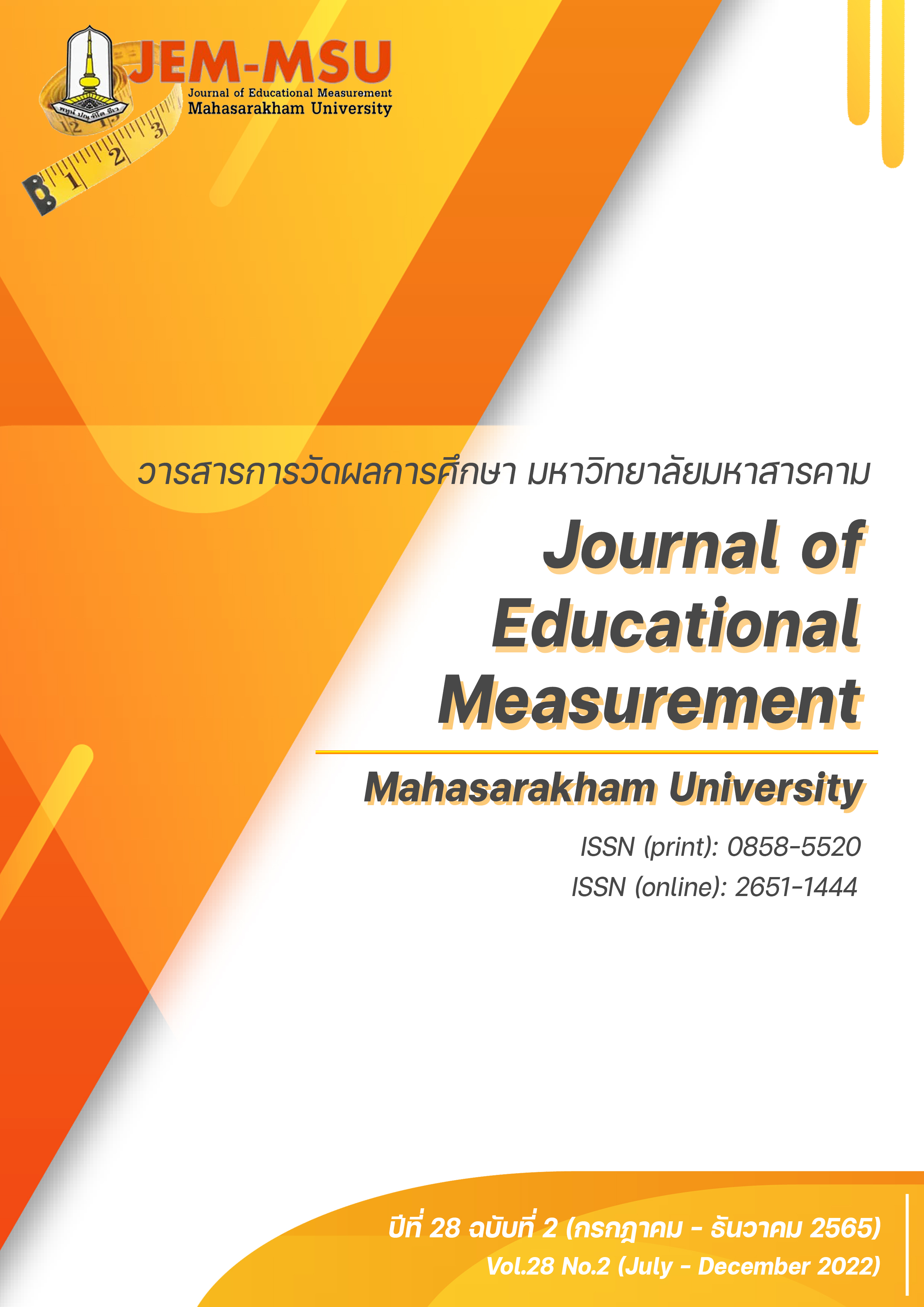The Needs Assessment in Teaching Thinking Competency Development Based on the Concept of School as Learning Community for Private School Teachers in Chiang Mai Province
Main Article Content
Abstract
The research objective was to study the needs, problems and obstacles in teaching thinking competency development of private school teachers, using the process of joint lesson development through the professional learning community based on the concept of school as a learning community. The sample consisted of 251 higher secondary school teachers in private schools in Muang District, Chiang Mai Province in the academic year 2020, obtained by multistage random sampling. The research instrument was a 5-point rating scale questionnaire. The statistics employed in the analysis of data were frequency (f), percentage, mean (), standard deviation (S.D.), modified priority needs index (PNIModified) and content analysis.
The results showed that higher secondary school teachers in the private schools had the need to develop the teaching thinking competency to enable students to use mathematical knowledge in processing as the first priority (PNIModified = 0.32), followed by the development of teaching thinking competency to enable students to analyze causes of problems and formulate effective solutions (PNIModified = 0.29). This was followed by the development of teaching thinking competency to enable students to use language to convey ideas to others well (PNIModified = 0.26), and the teacher’s competency in human relations, emotional control, and open-mined came last in priority (PNIModified =0.12).The teachers recognized the importance of developing teaching thinking competency to enable students to use mathematical knowledge, analyze causes of problems and formulate solutions, and the ability to use language to convey ideas to others. Teachers needed teaching innovations to be criticized in order to develop more effective work. They needed to conduct learning activities through systematic thinking, to invent a variety of teaching materials, to focus on development of students' thinking, and they also realized the importance of developing teaching thinking competence by urging their schools to disseminate the school's teaching and learning management to other schools in Chiang Mai. In terms of major problems and obstacles in developing teaching competency, they were listed as follows: the teachers lacked knowledge and expertise in performing duties; they lacked skills and experience in teaching thinking; their workload was too big; they lacked cooperation from students and parents; and there was a lack of a good management system.
Article Details

This work is licensed under a Creative Commons Attribution-NonCommercial-NoDerivatives 4.0 International License.
The content and information contained in the published article in the Journal of Educational Measurement Mahasarakham University represent the opinions and responsibilities of the authors directly. The editorial board of the journal is not necessarily in agreement with or responsible for any of the content.
The articles, data, content, images, etc. that have been published in the Journal of Educational Measurement Mahasarakham University are copyrighted by the journal. If any individual or organization wishes to reproduce or perform any actions involving the entirety or any part of the content, they must obtain written permission from the Journal of Educational Measurement Mahasarakham University.
References
Brookfield, S. D., & Brookfield, S. (1995). Becoming a critically reflective teacher. Jossey-Bass.
Darling-Hammond, L. (1999). Teacher quality and student achievement: A review of state policy evidence. Center for the Study of Teaching and Policy, University of Washington.
DuFour, R. (2007). Professional Learning Communities: A Bandwagon, an Idea Worth Considering, or Our Best Hope for High Levels of Learning?. Middle School Journal(J1), 39(1), 4-8.
Harari, Y. Noah. (2018). 21 Lessons for the 21st Century. Clays Ltd, Elcograf S.p.A.
Hord, S. M. (1997). Professional learning communities: Communities of continuous inquiry and improvement. Southwest Educational Development Laboratory.
Krejcie, R. V., & Morgan, D. W. (1970). Determining sample size for research activities. Educational and Psychological Measurement, 30(3), 607–610.
McClelland, C. David. (1973). Testing for Competence rather than for Intelligence. American Psychologist.
Seashore, K.R., Anderson, A.R. & Riedel, E. (2003). Implementing arts for Academic achievement: The impact of mental models, professional community and interdisciplinary teaming. Paper presented at the 17th Conference of the International Congress for School Effectiveness and Improvement, Rotterdam, January.
Torrance, E. P. & Myers, R. E. (1970). Creative Learning and Teaching. Dodd.
Chareonwongsak, K. (2013). Creative thinking. Success Media. (in Thai)
Chomphupart, S. (2011). A development of instructional behavior for the creative problem solving of teachers and students at the science gifted student’s promotion school using emancipatory action research [Doctoral Dissertation]. Srinakharinwirot University. (in Thai)
Kanchanachaya, N. (2016). Creative problems solving process instructional management. SDU Research Journal, 12(3), 207-224. (in Thai)
Khemmani, T. (2014). Bringing the teaching world to life for the new century classroom. Academic conference on productivity learning of the 21st century skills: Thinking process skills and social process skills. Office of Social Promotion of Learning and Youth Quality. (in Thai)
Manabu, S. (2016). School reform, the concept of “Learning Community” and the application from theory to practice. (Kulkanlaya Phusing, Translated). Parbpim Printing. (in Thai)
Office of Coordination and Promotion of the Private Education Commission, Chiang Mai Province. (2017). Private education quality development plan, Chiang Mai Province, Academic Year 2017 – 2021. (in Thai)
Office of the Education Council. (2019). Framework of Core Competency for Learners at Basic and Elementary Education Levels (P.1-3). 21 Century. (in Thai)
Office of the Education Council. (2020). State of Thai education B.E. 2561/2562 (A.D. 2018/2019) education reform in the digital era. Parbpim. (in Thai)
Panich, V. (2012). Ways to create learning for students in the 21st century. Tathata Publication Co., Ltd. (in Thai)
Phanlert, C. (2015). Mentoring in 9 ways to build teachers to students: a document of concepts and guidelines of professional development for teachers’ working group. Office of Social Promotion of Learning and Youth Quality. (in Thai)
Wongwanich, S. (2015). Needs assessment research. Chulalongkorn University Printing House. (in Thai)


